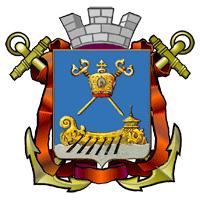
 |

| • Home / Seven Wonders of Nikolaev / Astronomical Observatory |

Nikolaev Astronomical Observatory is an architectural monument of national importance. It is one of the oldest observatories of the south-eastern Europe.
Work on the Nikolaev Naval Observatory, the first in southeastern Europe, began in 1821 during the tenure of Governor General Oleksiy Samuilovych Grage
The Observatory provided the Black Sea Fleet with nautical maps, trained mariners in celestial navigation, reset chronometers, and certified other navigational instruments. The history of Observatory can be divided into three periods
From 1821 to 1904 it was known as the "Naval Astronomic Observatory" and its primary mission was to support Russia's Black Sea fleet From 1904 to 1991 the Observatory was administered as part of the Pulkovo observatory and known as the Southern Branch of the Main Astronomic Observatory. Since 1992 the Observatory has operated as an independent scientific organization. In 2001, the Observatory received a special international recognition when a newly discovered planet was named 8141 Nikolaev to commemorate the Observatory's many contributions to astronomical science.
There is no other observatory like it in Ukraine. On the world level, its analogs are Britain's Royal Observatory and the U.S. Naval Observatory. Today, the Nikolaev Astronomical Observatory is recognized at the national and international levels as a cultural monument. In 2007, for example, UNESCO placed it on Ukraine's tentative list of world heritage sites. Since 1992 the Observatory has operated as an independent scientific organization. In 2001, the Observatory received a special international recognition when a newly discovered planet was named 8141 Nikolaev to commemorate the Observatory's many contributions to astronomical science.
Print page » |



